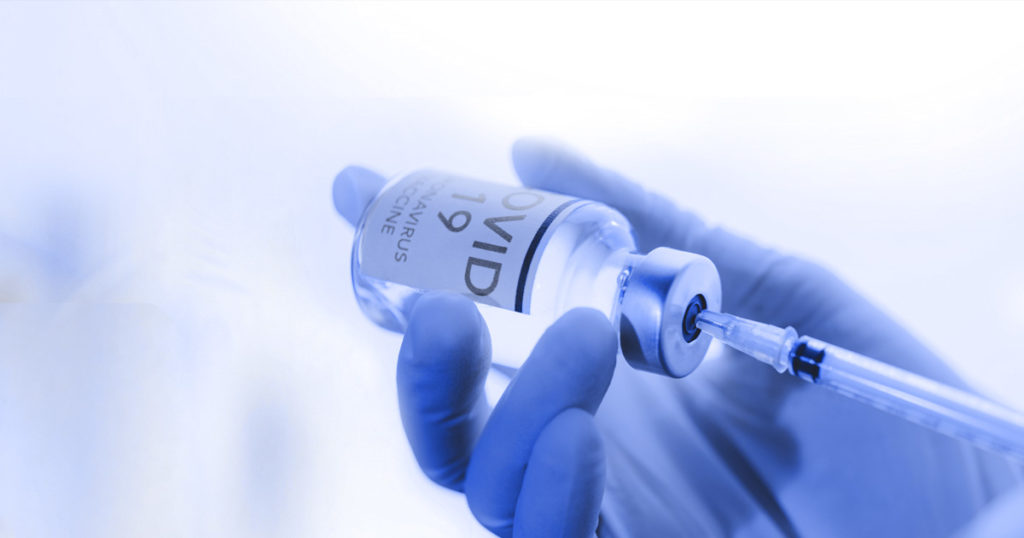
In the rapidly shifting context of a pandemic, public health officials need a way to quickly assess how vaccinations perform in changing situations. One approach is to identify correlates of protection, or biological markers that correlate with a certain level of protection from disease. This tool is used to assess the design and formulation of annual influenza vaccines, as immune system markers that correlate with protection from flu can give developers a sense of how effective the vaccine might be for different population groups. Though they are not a replacement for rigorous clinical trials, correlates of protection can provide meaningful and predictive data for vaccine developers with smaller trial sizes and less time.
A study published in November 2021 indicated that levels of binding antibodies and neutralizing antibodies for the SARS-CoV-2 virus in blood serum are correlates of protection for Moderna, Inc.’s COVE phase 3 clinical trial of their mRNA COVID-19 vaccine.
Correlating Protection with Biomarkers
A team of researchers, including scientists from Moderna, assessed four different biomarkers in the blood sera of participants in the COVE trial. Of the samples examined, 1,010 were from participants who received two doses of the vaccine and 137 were from participants who received a placebo. Samples were collected immediately after and four weeks after the second dose of the vaccine.
In addition to quantifying the spike and spike receptor binding domain binding antibodies in the sera samples, the research team conducted neutralization assays. These assays determine the maximum dilutions of sera samples that can inhibit replication of a pseudovirus in cells by a given threshold—50% and 80% in this study. Large inhibitory dilution (ID) values correspond to higher quantities of neutralizing antibodies in the sample.
To carry out the neutralization assay, the researchers first generated a pseudovirus displaying SARS-CoV-2 spike proteins and carrying a bioluminescent firefly luciferase plasmid. They then incubated cultures of ACE2 cells with the pseudovirus and sera samples. After the incubation period, they could determine to what extent the pseudovirus replicated by adding luciferase reagent and measuring the resulting luminescence. Values for the maximum dilution of the sera samples required to inhibit viral replication by 50% and by 80% provided ID50 and ID80 values, respectively.
The researchers found that the binding antibody quantities and the ID50 and ID80 values all directly correlated with the measured efficacy of the mRNA-1273 vaccine in trial participants. That is, the antibody marker levels were higher in individuals who did not contract COVID-19 compared to individuals who did contract symptomatic COVID-19. Likewise, efficacy of the vaccine at preventing symptomatic COVID-19 cases corresponded with increased antibody marker levels.
Based on these results, the study authors suggest that these antibody markers could be used as evidence for making provisional decisions about dose schedules, recipient age groups or boosters for the mRNA-1273 vaccine.
The Question of Variants and Vaccines
The pseudovirus used in the study’s neutralization assay incorporated SARS-CoV-2 spike protein carrying only a single mutation: D614G. This spike protein mutation corresponds with a variant of the SARS-CoV-2 virus that was first detected in March 2020 and is similar to the strain used in the mRNA-1273 vaccine. The last date sera samples for this study were collected was March 26, 2021.
The D614G mutation is only one of the many mutations carried in the five SARS-CoV-2 variants of concern that have emerged since early 2020. Though studies have assayed antibody responses to live virus and psuedovirus variants, further studies will be required to determine if the antibody markers identified in this report can also be used as correlates of protection for other SARS-CoV-2 variants.
The study described above used the GloMax® Navigator Microplate Luminometer and Bright-Glo™ Luciferase Assay System to measure luminescence during the production of pseudotyped viruses and the neutralization assay.
Read more about bioluminscent psuedotyped reporter viruses here at the Promega Connections blog.
Latest posts by Jordan Nutting (see all)
- The Central Dogma of Promega: The Story and Science Behind Our Kit Packaging Design - May 7, 2024
- Silencing the Immunogenicity of AAV Vectors - April 4, 2024
- Discovering Cyclic Peptides with a “One-Pot” Synthesis and Screening Method - February 29, 2024
